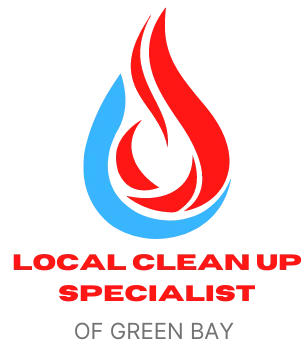Taking Preventive Measures to Avoid Costly Water Damage Repairs
Water damage can be a homeowner’s nightmare, leading to costly repairs, significant property loss, and substantial disruptions to daily life. Unfortunately, it’s not always possible to predict when water damage will occur, but taking preventative measures can significantly reduce the risk and impact of such events. This blog post will explore essential steps that homeowners can take to minimize the likelihood of water damage and avoid the expensive and time-consuming repairs that often follow. From regular maintenance checks to the installation of advanced detection devices, we’ll provide you with the best practices to keep your home safe and dry. Let’s dive into the practical measures you can implement to safeguard your property against the unpredictable nature of water damage.
Regular Maintenance Checks
One of the most effective ways to prevent water damage is to conduct regular maintenance checks of your home’s plumbing system. This proactive step can help you identify potential problems before they escalate into costly repairs. Here are key aspects to focus on during these checks:
- Inspect Pipes Regularly: Make it a routine to inspect all accessible pipes in your home for signs of wear, leaks, or corrosion. Pay special attention to older pipes, as they are more susceptible to breaking. During colder months, ensure that pipes in unheated areas are well insulated to prevent freezing and bursting.
- Check Appliance Connections: Appliances like washing machines, dishwashers, and refrigerators often contribute to water damage. Examine hoses and connections for kinks, leaks, or signs of deterioration. It’s recommended to replace hoses every 5-7 years, even if they don’t appear worn out.
- Test Shut-Off Valves: Knowing how to quickly shut off your home’s water supply can mitigate water damage significantly in the event of a pipe burst. Test these valves annually to ensure they are functioning correctly, as they can seize up over time.
- Service Your Water Heater: Water heaters are another common source of leaks. Check for signs of leakage or rust, and have it serviced by a professional regularly to avoid unexpected failures. Draining the tank annually can also help remove sediment buildup and prolong the life of your heater.
Regular maintenance not only helps prevent water damage but also extends the life of your plumbing system and appliances. Taking time to perform these checks can save you a great deal of stress and expense in the long run.
Improve Drainage Systems
Proper drainage is crucial in preventing water damage, especially during heavy rainfall. Ensuring that water flows away from your home rather than towards it can make a significant difference in maintaining a dry and damage-free property. Here are practical steps you can take to enhance your home’s drainage system:
- Clean Gutters and Downspouts: Blocked gutters and downspouts can cause water to overflow and seep into your home’s foundation, walls, and basement. Regularly cleaning these areas, especially before and after storm seasons, ensures that water is properly channeled away from your home. Installing guards on gutters can also help keep debris out and reduce the frequency of cleaning.
- Inspect and Repair Your Roof: Your roof is your home’s first line of defense against water damage. Regularly inspect your roof for damaged or missing shingles and ensure all seals and flashing are intact. A well-maintained roof prevents water from leaking into the attic and down into your living spaces.
- Optimize Landscape Grading: The ground around your home should slope away from the foundation to prevent water from pooling around your property. It’s advisable to check the grading around your home annually, as natural shifts in the ground can alter drainage patterns over time.
- Install Drainage Solutions: For areas prone to collecting water, consider installing French drains or catch basins to help direct water away from your property. These systems provide an effective pathway for excess water to flow, preventing accumulation around your home.
By ensuring that your home’s exterior is equipped to handle water properly, you can greatly reduce the risk of water damage. Well-maintained drainage systems not only protect your foundation and landscaping but also help maintain the structural integrity of your entire home.
Seal Windows and Doors
Water seepage through windows and doors can lead to significant damage, particularly during storms. To ensure your home remains dry and secure, it’s vital to maintain the integrity of all seals:
- Check Seals Regularly: Annually inspect the seals around windows and doors for any signs of wear such as cracking or peeling. Damaged caulk or weather stripping should be replaced promptly to maintain an effective barrier against moisture. This not only prevents water ingress but also enhances energy efficiency by minimizing drafts.
- Install Storm Shutters: Particularly in areas prone to hurricanes, storm shutters are an essential addition to safeguard your home. These shutters provide a robust defense against high winds and driving rain, preventing water from breaking windows and entering your home. They can be permanent fixtures or deployed only during severe weather, offering both protection and peace of mind.
By keeping a close eye on the condition of your window and door seals and considering additional protective measures like storm shutters, you can significantly reduce the risk of water damage during adverse weather conditions.
Conclusion
Preventing water damage requires a combination of regular maintenance, technological aids, and proactive measures. By taking these steps, you can protect your home from the potentially devastating and costly effects of water damage. Don’t wait until it’s too late! Contact Local Cleanup Specialists today to schedule a professional inspection of your home’s water damage prevention systems. Ensure your property is well-equipped to handle any situation and keep your home safe and dry. This comprehensive approach will help you address potential water risks proactively, safeguarding your home and giving you peace of mind.
